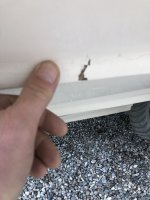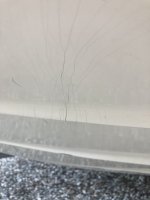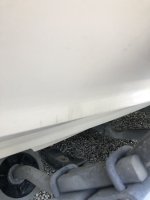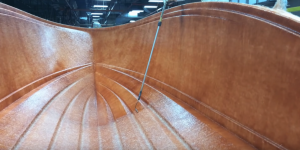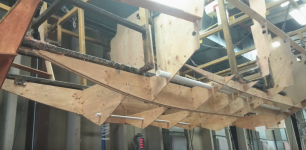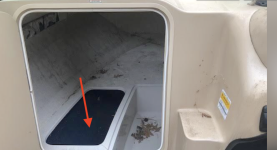Yannih
Cadet
- Joined
- Aug 28, 2023
- Messages
- 18
I have a 2000 Sea Ray 190 CC.
Everything was proceeding perfectly regarding getting the boat to as new condition until I took the boat for a major service on the engine and outdrive to ensure I was on the best start possible mechanically.
While this all came up great, the marine boy's advised poor news as there was a soft spot on the forward port side of the hull around the water line level.
The spot is just over 2 feet long by about 1 foot deep.
While there is some minor stress / spider cracking in the gelcoat, I cannot feel any give or movement while pressing on the hull, but the old tap method tells a slightly different story.
I contacted the previous owner to see what the cause might have been such as the boat hitting something but he advised he was unaware of this issue.
So I am not sure if it is a delimitation or rot issue.
Is anyone aware of how these older Sea Rays were constructed such as wood / foam under the glass in that area and what has most likely happened re rot or delimitation?
Also as a resolution, is injecting a thickened epoxy mix into the area via drilled holes a possible strengthening resolution or is it a full cut out of the affected area?
Any advise or help on this would be greatly appreciated as I am in the dark on this latest crappy development...

Everything was proceeding perfectly regarding getting the boat to as new condition until I took the boat for a major service on the engine and outdrive to ensure I was on the best start possible mechanically.
While this all came up great, the marine boy's advised poor news as there was a soft spot on the forward port side of the hull around the water line level.
The spot is just over 2 feet long by about 1 foot deep.
While there is some minor stress / spider cracking in the gelcoat, I cannot feel any give or movement while pressing on the hull, but the old tap method tells a slightly different story.
I contacted the previous owner to see what the cause might have been such as the boat hitting something but he advised he was unaware of this issue.
So I am not sure if it is a delimitation or rot issue.
Is anyone aware of how these older Sea Rays were constructed such as wood / foam under the glass in that area and what has most likely happened re rot or delimitation?
Also as a resolution, is injecting a thickened epoxy mix into the area via drilled holes a possible strengthening resolution or is it a full cut out of the affected area?
Any advise or help on this would be greatly appreciated as I am in the dark on this latest crappy development...

Last edited:




















